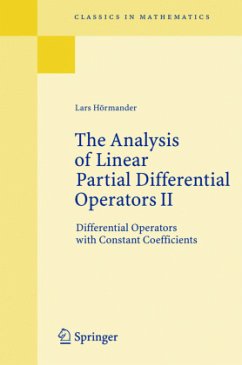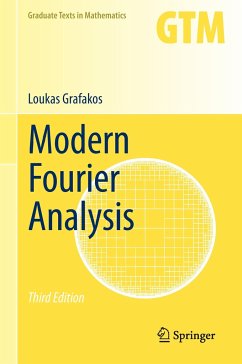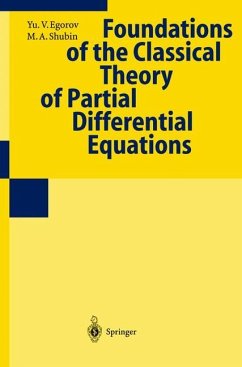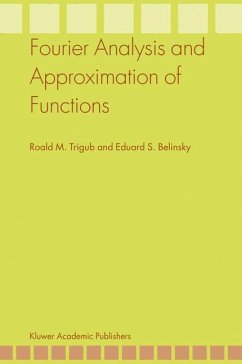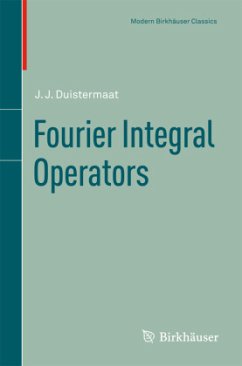
The Analysis of Linear Partial Differential Operators I
Distribution Theory and Fourier Analysis
Versandkostenfrei!
Versandfertig in 1-2 Wochen
43,99 €
inkl. MwSt.

PAYBACK Punkte
22 °P sammeln!
Vol. 1 of Lars Hörmander's influential 4-volume treatise is a detailed exposition of the theory of distributions.
From the reviews:
"In order to illustrate the richness of the book: in my review of the 1983 edition [...] I gave a list of 20 subjects which were new compared to Hörmander's book of 1963. Most of these subjects concern important, basic and highly nontrivial theorems in analysis. Hörmander's treatment of these is extremely clear and efficient and often highly original. [...] Most of the exercises are witty, with an interesting point. The phrasing of both the exercises and the answers and hints is very careful [...] In all, the book can be highly recommended, both as a textbook for advanced students, and as background and reference for introductory courses on distributions and Fourier analysis." - J.J. Duistermaat in Mededelingen van het Wiskundig Genootschap.
From the reviews:
"In order to illustrate the richness of the book: in my review of the 1983 edition [...] I gave a list of 20 subjects which were new compared to Hörmander's book of 1963. Most of these subjects concern important, basic and highly nontrivial theorems in analysis. Hörmander's treatment of these is extremely clear and efficient and often highly original. [...] Most of the exercises are witty, with an interesting point. The phrasing of both the exercises and the answers and hints is very careful [...] In all, the book can be highly recommended, both as a textbook for advanced students, and as background and reference for introductory courses on distributions and Fourier analysis." - J.J. Duistermaat in Mededelingen van het Wiskundig Genootschap.
The main change in this edition is the inclusion of exercises with answers and hints. This is meant to emphasize that this volume has been written as a general course in modern analysis on a graduate student level and not only as the beginning of a specialized course in partial differen tial equations. In particular, it could also serve as an introduction to harmonic analysis. Exercises are given primarily to the sections of gen eral interest; there are none to the last two chapters. Most of the exercises are just routine problems meant to give some familiarity with standard use of the tools introduced in the text. Others are extensions of the theory presented there. As a rule rather complete though brief solutions are then given in the answers and hints. To a large extent the exercises have been taken over from courses or examinations given by Anders Melin or myself at the University of Lund. I am grateful to Anders Melin for letting me use the problems originating from him and fornumerous valuable comments on this collection. As in the revised printing of Volume II, a number of minor flaws have also been corrected in this edition. Many of these have been called to my attention by the Russian translators of the first edition, and I wish to thank them for our excellent collaboration.





